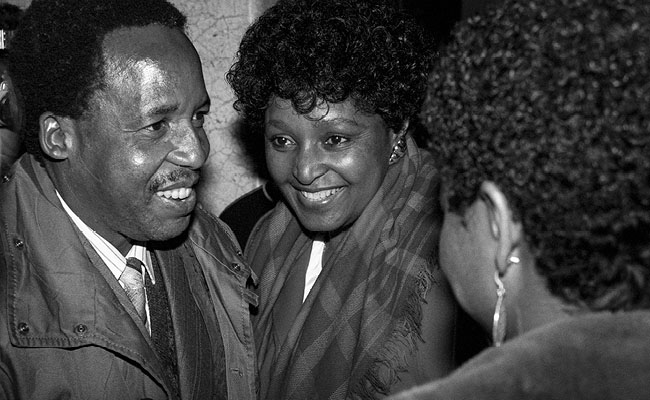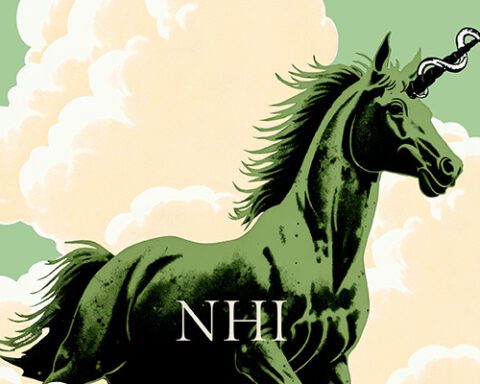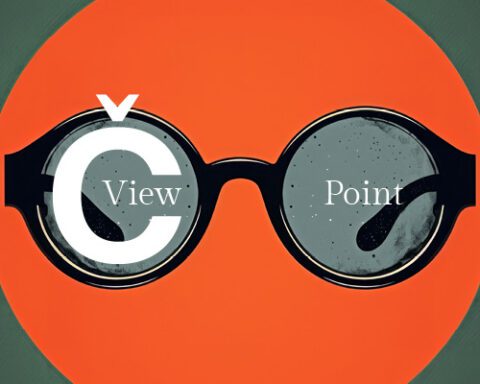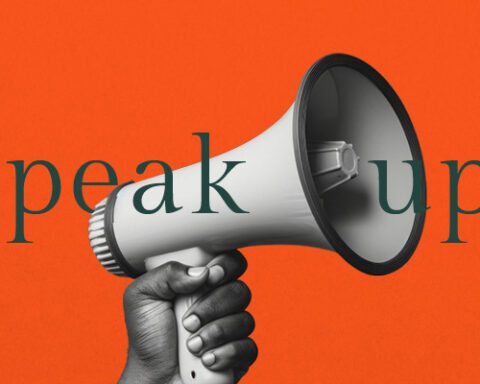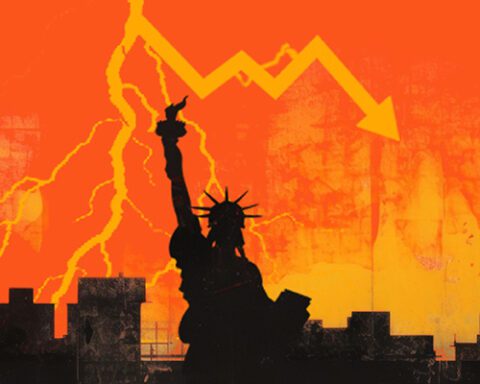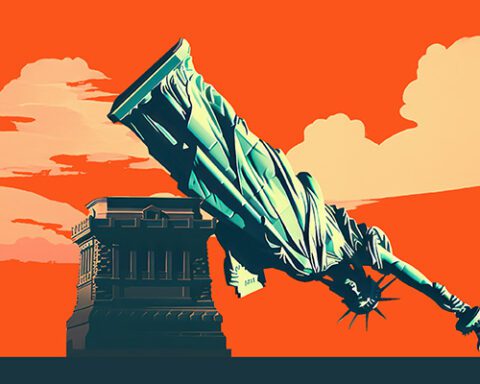Saturday, April 10 1993. Dawn Park, Boksburg.
Chris Hani, hero of uMkhonto weSizwe and the SACP, had just returned from his local café with a newspaper and a plastic bag of groceries. As he got out of his car in the driveway of his house, a blond man approached, pointed his gun at him, and shot him four times. Hani died on the spot.
The Polish-born Janusz Walus was arrested shortly afterwards, along with his friend and political mentor, Clive Derby-Lewis, an MP from the Conservative Party. Both were later found guilty of the murder and sent to prison.
Their defence, which they later expanded upon during an amnesty application before the Truth and Reconciliation Commission (TRC), was simple: Hani was a communist; the assassination was an act of resistance against the communist ANC takeover; the murder was meant to derail the settlement process and mobilise white right-wingers.
Derby-Lewis maintained until his death at the age of 80 in 2016, and Walus until his deportation this week, that this was the whole story and that only the two of them were involved in the murder.
This is the weak point in all the theories of Hani’s assassination, and the only possible explanation offered – a rather flimsy one – is that the two men were afraid that their superiors would kill them if they told the truth.
There is certainly a theoretical possibility that the two men wanted to remain loyal to their masters or organisations until the end. Or could it be that Walus and Derby-Lewis themselves didn’t realise they were being used as pawns?
Hani’s wife and daughters, along with his comrades in the ANC and SACP, have maintained from day one that there was a wider conspiracy.
Hundreds of articles and several books have been written about it. And yet, no-one has ever been able to produce a smoking gun that could prove any of the many theories. But even with Walus’s departure back to Poland, Hani’s widow, Limpho, the SACP, the ANC, MK and the EFF have lamented that he “escaped with his secrets”.
Unanswered questions
What all the research and revelations over the past 30 years have achieved is that it seems the full truth has not been told, and there are many troubling questions that could cause significant damage to political reputations.
As expected, fingers are pointed at operatives of the old National Party government, which was still in power at the time, and at the ANC itself. Hani had many enemies in the organisation, including former MK commander and later defence minister Joe Modise, and former presidents Thabo Mbeki and Jacob Zuma, all of whom had previously clashed with him.
The gossip within the SACP over the years was that Mbeki was afraid of Hani’s popularity in the ANC and wanted to prevent him from standing in his way of one day becoming president.
Then there is a theory that cannot be dismissed outright: that it was a joint project between certain ANC leaders and the old security forces, with Walus merely serving as the foot soldier.
The first question still remains: why did one of the best-protected political leaders in South Africa not have a single bodyguard that Saturday morning to protect him?
A popular theory is that Hani was somewhat of a womaniser and that he personally let his bodyguards off duty that weekend because he was entertaining a woman. But all information suggests that only Hani’s daughter Khwezi was with him that morning.
Hani’s close friend and confidante, Winnie Madikizela-Mandela, claimed at the time that the ANC’s security department had withdrawn the bodyguards precisely to make the assassination possible.
The second question is whether the several eyewitnesses who claimed that a second car, a white one, sped away from the scene next to Walus’s red Mazda, are telling the truth, lying, or mistaken. Limpho Hani has always been convinced that Walus was not alone at the scene. She and others believe that the police suppressed the second car in their investigation to cover up the truth.
The US Executive Intelligence Review stated as a fact in May 1993 that there was a second car, but references to it in the police reports were erased within days. (The review speculated that British intelligence had a hand in the murder.)
But what would the motive for the murder be if it wasn’t as simple as Walus and Derby-Lewis say?
The enemy within?
Two recent books on the Hani assassination, former judge Chris Nicholson’s Who Really Killed Chris Hani? (2024) and Dutch/South African journalist Evelyn Groenink’s Incorruptible: The Story of the Murders of Dulcie September, Anton Lubowski and Chris Hani (2018), contain a flood of information, wild claims, and untested conclusions.
A popular theory is that Hani threatened to derail the large arms deal finalised in 1999 but already planned before then. It is here that particularly Modise, who was close to Mbeki, is brought up. Modise and his friends and partners allegedly received large sums of bribe money. Mbeki, as deputy president, chaired the cabinet committee overseeing the arms purchases.
Groenink claims in her book that Walus’s then-employer, Peter Jackson, to whom the red Mazda belonged, had ties to Osprey, agents of British Aerospace. BAE Systems allegedly paid large sums of money in bribes to secure the aircraft contract.
Nicholson writes, based on various news reports over the years, that a senior national intelligence official and former MK officer, Mheli Madaka, claimed in a confidential report that Mbeki had received R30m in bribe money from Ferrostaal for the purchase of submarines, which was allegedly brought into the country in cash by the presidential jet.
Both Mbeki and Ferrostaal denied the allegations.
Madaka died in a car accident in 2007, after his car’s brakes had been tampered with.
Nicholson cites a 2001 book by former security policeman JG Scholte, High Treason – An Intelligence Report on South Africa, which states that the then head of the ANC’s security and Mbeki’s confidant, Tito Maleka, allegedly ordered that Hani be killed.
A former policeman who later worked as an agent for military and national intelligence, Eugene Riley, is apparently the source for this. He claimed in memos to his handlers in military intelligence just before Hani’s death that one of his sources, who also worked for ANC intelligence, a certain Ramon, also known as Mohammed Amin Laher, Mark Todd, Joseph Khan and Mark Laher, predicted the assassination plans for April 10.
Ramon claimed that the ANC’s department of intelligence and security (DIS), which was under Zuma’s command, intended the attack on Hani as a way to disrupt the Codesa negotiations and heal the “rift between MK and the SACP”.
According to Riley’s memo, dated the day before the assassination, DIS ordered that Hani’s bodyguards be withdrawn on April 10. Riley writes that Ramon told him there was a Polish member of DIS’s “strike unit” who would be used as the driver during the assassination attack.
Veteran journalist Hazel Friedman wrote on January 31 1997 in the Mail & Guardian that she had an interview with Riley a few days before the Hani murder, during which he told her there would be an attempt on Hani’s life.
Riley’s partner, Julie Wilken, testified in an affidavit that she typed the Riley memos – she even passed a lie detector test about it. She knew Ramon and said he threatened her, warning her to never speak about the ANC’s involvement in the assassination plans.
Riley was shot dead in January 1994 in his home, according to journalist Chris Steyn, by some of his old CCB associates. Wilken was then in official witness protection for eight years.
Madikizela-Mandela claimed a week after Hani’s death, according to the Sunday Times of London, that ANC leaders had conspired with the apartheid government to eliminate Hani. She allegedly said that details of Hani’s movements and when he would be without bodyguards were provided by ANC circles to agents of the old government, who then passed this on to Walus.
If the Riley memos are indeed authentic, and the murder plans were passed on to military intelligence in advance, the question arises as to why the organisation did nothing to warn or protect Hani.
The front organisation
This brings us to one of Nicholson’s favourite theories. He writes extensively about the shadowy front organisation, the South African Institute of Maritime Research (SAIMR).
When an investigator from the TRC, Christelle Terreblanche (also a former editorial member of Vrye Weekblad), received the national intelligence file on the Hani murder, there was nothing about Hani in it, but there were documents about SAIMR, which was also allegedly involved in the murder of former UN secretary-general Dag Hammarskjöld. SAIMR is also linked to the failed coup in the Seychelles in 1981. (The Guardian has more on SAIMR here.)
According to testimony before the TRC during Walus and Derby-Lewis’s amnesty application, Walus had at one point applied to become a mercenary with SAIMR.
Nicholson writes: “General Tienie Groenewald is central to the whole saga. Not only was he chief director of military intelligence, which was behind virtually everything in the Hani murder, he headed SAIMR.” He writes that SAIMR had ties to 49 right-wing nationalist organisations in the West and intelligence communities around the world.
Groenewald was, along with generals Constand Viljoen and Kobus Visser, a member of the “committee of generals” and leader of the Afrikaner Volksfront, which was formed shortly after Hani’s assassination to halt the Codesa negotiations and mobilise forces nationwide. He died in 2015.
Can the ANC afford a truly in-depth, independent investigation into Hani’s assassination?
Winnie Madikizela-Mandela speaks to Chris Hani. Photo by Per-Anders Pettersson for Getty Images.
Sign up to Currency’s weekly newsletters to receive your own bulletin of weekday news and weekend treats. Register here.
